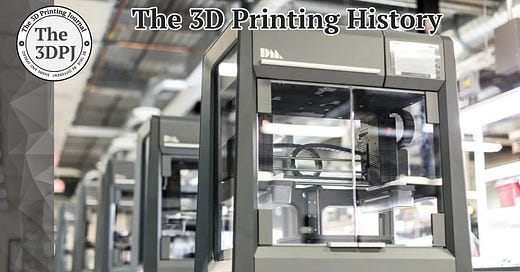12-18-2017: Desktop Metal completed the first deliveries of its Studio System
Google ATAP was among the very first recipients
On December 18, 2017, Desktop Metal began shipping its Studio System, targeted at customers under the Pioneer Program. It was the first commercial metal 3D printing system that didn’t rely on metal powders or lasers but instead utilized Desktop Metal’s proprietary Bound Metal Deposition (BMD) technology, reminiscent of FDM/FFF.
The Studio System consisted of three main components: a 3D printer, a debinding unit, and a sintering furnace. The printing process used a filament containing metal particles embedded in a polymer matrix. After printing the so-called “green part,” the item was cleaned of the polymer binder and then sintered in the furnace, resulting in a dense, fully metal part.
The Studio System employed a metal 3D printing process that was significantly cheaper and more accessible than traditional additive manufacturing methods for metals. Desktop Metal marketed the system as being ten times cheaper than competing technologies. The complete setup was priced at approximately $120,000, including the printer, debinder, and furnace.
The first customer to receive the Studio System was Google’s Advanced Technology and Products (ATAP) team. Known for their work on innovative hardware projects, ATAP had previously relied on casting and plastic 3D printing for prototyping. The Desktop Metal system enabled them to rapidly produce functional metal prototypes in-house, accelerating design processes and shortening project timelines.
Other early customers included Lumenium (a manufacturer of combustion engines), the US Navy’s Naval Surface Warfare Center, Medtronic, and Built-Rite Tool & Die.
This historical post comes at a difficult time for Desktop Metal, as the fate of its acquisition by Nano Dimension hangs in the balance—a deal that may be the company’s only path to survival. Unfortunately, while the BMD technology was innovative and generated significant customer interest, it failed to be sufficiently profitable or demending to justify the billions of dollars invested in the company.
To stimulate demand and maintain its market presence, Desktop Metal acquired several prominent companies, such as EnvisionTEC and ExOne, burning through cash reserves and becoming buried under the weight of rising operational costs. This has led the company to its current precarious situation, where its only lifeline appears to be Nano Dimension—a company itself plagued by internal conflicts.
Had Desktop Metal grown its business slowly and organically, without the greed-driven haste that characterized its trajectory, perhaps this story would have taken on a very different tone today.
Source: www.desktopmetal.com





